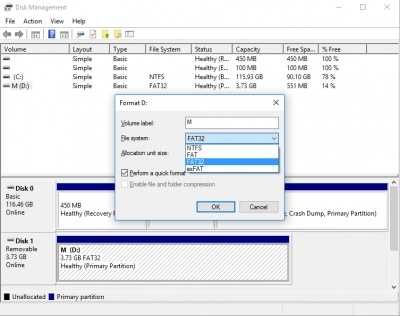If you facing issue: the volume does not contain a recognized file system
Here you will find out:
- reason of "The volume does not contain a recognized file system" issue
- how you can fix it
- how DiskInternals can help you
Are you ready? Let's read!
Overview of the issue
The error message “The volume does not contain a recognized file..” can pop up on the monitor for a long time and ultimately lead to serious consequences.
At the same time, this error affects not only hard drives, but also many removable drives, such as an external hard drive, flash card, SD card, etc. Until this mistake has resulted in serious damage, you need not deal with it.
Actually, this will be discussed later.
Reasons for "The volume does not contain a recognized file system" message
Let's try to show you all the most important causes of file system issues:
- File system conversion
- The OS was installed improperly
- Damaged or deleted system files, due to a virus, for example
- High-voltage peaks causing the computer to shut down spontaneously
- Damage to the hard disk or bad sectors
Step 1. Get your files from the volume
For this step, you need DiskInternals Partition Recovery. This software tool has several modes of operation, and in the case of an error, you can:
- Use the read mode and get your files.
- Use recovery mode and return inaccessible or deleted data. In this case, save your files on another disk (because you can lose your data due to the methods for fixing this error).
If you have doubts about choosing this product, it does not matter; you can download the free trial version of the program right now and use the Preview function to see the unsurpassed results.
By the way, this feature is free for you always and in any version of the program. Partition Recovery searches for information on each of the disk partitions individually, thereby not missing a single file. You can return images, music, documents, etc., and they can be of any size. The main thing is that the disk on which you will save the restored information contains it.
In addition, by purchasing this application, you can get technical support for free and use it to resolve issues.
Step 2. Try these non-radical methods
To combat this insidious and incomprehensible task, you can try the SFC method.
With this check, all arising system errors will be fixed. You just need to type "sfc / scannow" in the command line and press Enter. This method is good, but it does not always help. In this case, run chkdsk and check the disk more thoroughly. Be warned, chkdsk is not as harmless as SFC. Using chkdsk will kill all your recoverable data (what size more than 512KB); any recoverable files found will be cut into small fragments during this check.
Therefore, take care of them in advance and make a backup or use DiskInternals Partition Recovery to recover already damaged files.
Here's how to use chkdsk:
Run the command prompt (as administrator) and type: "chkdsk f: / x", where x is the drive letter for scanning. Next, press Enter, and after checking the disk, restart the system.
Step 3. Yes, this will help
If none of the previous methods worked, the problem may be in a damaged partition table. In this case, you can only rely on a radical method: reformatting the disk.
In order to perform formatting, you need to go to Disk Management and select the hard disk or problematic removable disk from the provided disks and click Format. Next, follow the recommendations of the Wizard to complete the formatting. Reboot the computer.

All of the above methods are good, but also have their drawbacks, so do not neglect good software to recreate lost files. Then you can use the most ruthless methods to deal with system errors.
